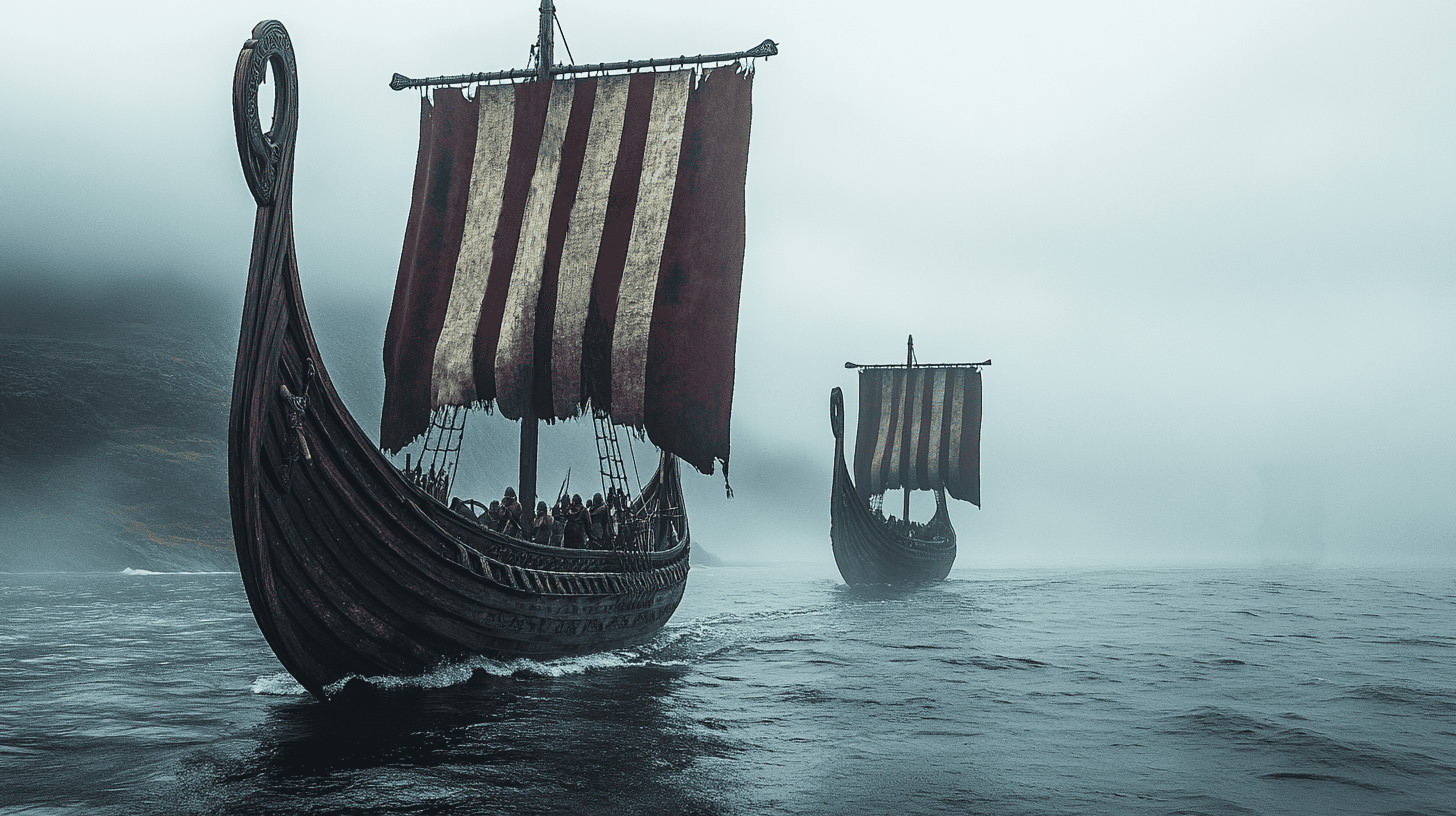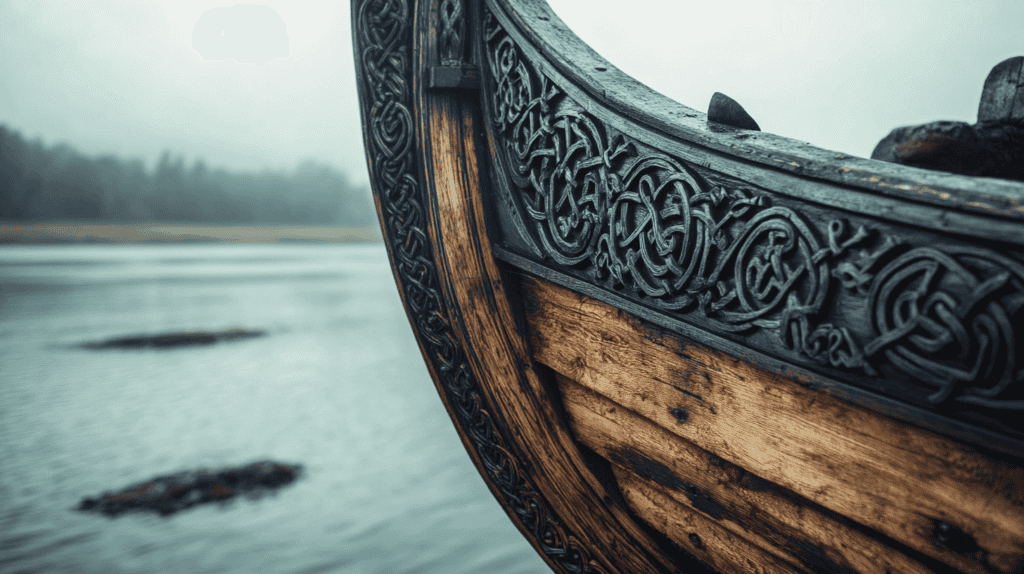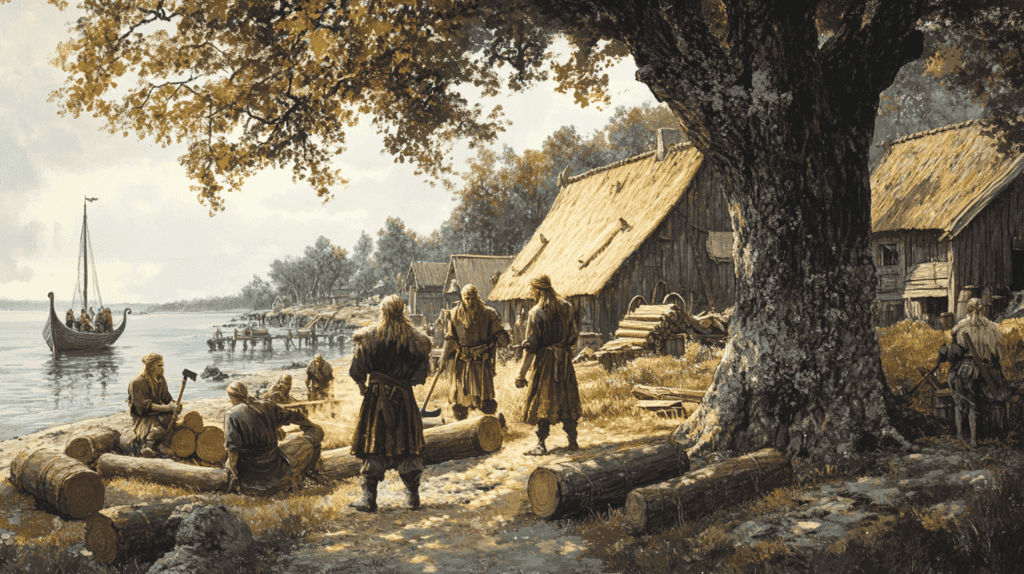
Viking longships were the pinnacle of Scandinavian naval engineering during the Dark Ages, embodying the spirit of exploration, trade, and warfare that defined this era. These remarkable vessels played a crucial role in shaping the history of Northern Europe and beyond, allowing the Norse people to expand their influence across vast distances.
The Evolution of Viking Ships
The development of Viking ships was a gradual process that spanned several centuries. The earliest precursors to Viking longships can be traced back to between 500 and 300 BC, with the discovery of the Hjortspring boat in Denmark.

This early vessel, though primitive compared to later longships, already displayed some key features that would become hallmarks of Viking shipbuilding. As shipbuilding techniques evolved, so did the design of Norse vessels. The Kvalsund ship, built in the late eighth century, marked a significant milestone in this evolution. It was the first ship to feature a true keel, which greatly improved stability and seaworthiness.
This innovation allowed Viking ships to handle rougher seas, paving the way for longer voyages and more ambitious expeditions. By the middle of the ninth century, the fully developed longship had emerged. These vessels combined the best features of their predecessors with new innovations, resulting in ships that were fast, agile, and capable of both coastal and open-ocean sailing.

Characteristics of Viking Longships
Viking longships were marvels of engineering, designed to excel in a variety of conditions. Their key characteristics included:
- Sleek Design: Longships were long, narrow, and light, with a shallow draft that allowed them to navigate in waters as shallow as one meter deep.
- Versatility: These ships were equally adept at sailing on the open ocean or navigating rivers and coastal waters.
- Speed: Viking longships could achieve impressive speeds, with an average range of 5-10 knots and a maximum speed of around 15 knots under favorable conditions.
- Dual Propulsion: Longships were equipped with both oars and a large square sail, allowing them to maintain speed even when the wind was unfavorable.
- Clinker-built Construction: The hull planks overlapped, creating a strong yet flexible structure that could withstand the stresses of ocean voyages.

Types of Viking Ships
While the longship is the most famous type of Viking vessel, the Norse actually used a variety of ship designs, each suited to specific purposes:
- Longships: These were the primary warships and exploration vessels. They were fast, agile, and could carry a significant number of warriors.
- Knarr: This was a merchant vessel designed for long sea voyages. Knarrs were broader and deeper than longships, with a large cargo capacity.
- Karve: A smaller version of the longship, the karve was used for both warfare and transport. It was particularly useful for coastal navigation due to its shallow draft.
Construction Techniques
The construction of a Viking longship was a complex process that required great skill and craftsmanship. The ships were built using the “clinker” or “lapstrake” technique, where the hull planks overlapped each other. This method created a strong yet flexible hull that could withstand the stresses of ocean voyages. The choice of wood was crucial and often depended on local availability. Oak was commonly used in Denmark, while pine was more prevalent in Norway and Sweden. The planks were fastened together with iron rivets, a technique that had been developed by the 3rd century CE.
One of the most remarkable aspects of Viking shipbuilding was the absence of a written plan. Master shipwrights relied on experience and tradition, passing their knowledge down through generations.

Navigation and Seamanship
The Vikings were skilled navigators who used a combination of celestial navigation, coastal landmarks, and an intimate knowledge of wind and wave patterns to guide their ships across vast stretches of open ocean. While they didn’t have compasses, the Vikings used a variety of tools to aid in navigation. One such tool was the “sun compass,” a wooden disc with a central gnomon that could be used to determine direction based on the sun’s position.
The Norse also relied heavily on oral traditions and knowledge passed down from experienced sailors. They had an extensive understanding of ocean currents, prevailing winds, and the migratory patterns of birds and sea animals, all of which helped guide their voyages.
Famous Viking Voyages
The capabilities of Viking longships enabled some of the most remarkable voyages of the medieval period:
- The Settlement of Iceland: In the late 9th century, Norse settlers sailed to Iceland, establishing a new Viking colony.
- Erik the Red’s Journey to Greenland: Around 985 CE, Erik the Red led a fleet of 25 ships to establish the first European settlement in Greenland.
- Leif Erikson’s Voyage to North America: Around the year 1000, Leif Erikson sailed to what is now Newfoundland, becoming the first known European to reach North America.
- The Mediterranean Expeditions: Viking longships even reached the Mediterranean, with Norse raiders sailing as far as North Africa and the Middle East.

Archaeological Discoveries
Our understanding of Viking ships has been greatly enhanced by several remarkable archaeological discoveries:
- The Oseberg Ship: Discovered in Norway in 1903, this beautifully preserved ship dates to around 820 CE. It provides valuable insights into Viking shipbuilding techniques and artistic traditions.
- The Gokstad Ship: Found in 1880, this 9th-century ship is one of the best-preserved Viking vessels ever discovered.
- The Skuldelev Ships: Five ships discovered in Roskilde Fjord, Denmark, in 1962. These ships provide a diverse sample of Viking Age vessel types.
- Roskilde 6: The longest known Viking warship, measuring an impressive 36 meters in length.
These archaeological finds have allowed modern researchers to study Viking shipbuilding techniques in detail and even construct accurate replicas of longships.
Conclusion
Viking longships were remarkable vessels that played a pivotal role in shaping the history of Northern Europe and beyond. Their unique design, combining speed, durability, and versatility, enabled the Norse people to become master sailors, traders, and explorers. From the fjords of Norway to the coasts of North America, these ships carried the Vikings across vast distances, facilitating cultural exchange, trade, and sometimes conflict.





